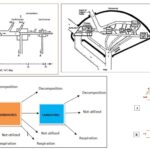When does the Beer-Lambert Law fail?
When does the Beer-Lambert Law fail?
Please login to submit an answer.
The Beer-Lambert Law fails under conditions that introduce factors outside its assumptions. First, at high concentrations, deviations occur due to molecular interactions, aggregation, and changes in the refractive index, which make the absorptivity no longer constant. Second, if stray light enters the spectrometer, it affects the accuracy of absorbance measurements, as it skews the linearity between absorbance and concentration. The law also assumes the use of monochromatic light, so when polychromatic light is used, varying absorption coefficients for different wavelengths cause the linearity to break down. Another scenario is when the absorbing species undergoes chemical reactions during the measurement, violating the assumption of constant absorptivity, leading to inaccuracies. Finally, if scattering effects become significant, such as when the solution contains particles large enough to scatter light, the Beer-Lambert Law is no longer valid because it only accounts for absorption, not scattering.
- Share on Facebook
- Share on Twitter
- Share on LinkedIn
Helpful: 0%




